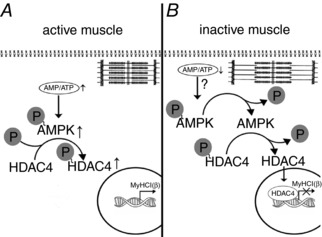Figure 7. A schematic representation depicting a hypothetical mechanism of the AMPK influence on MyHC I(β) mRNA expression via HDAC4 in an active and unloaded rat soleus muscle.

A, rat soleus muscle under the conditions of normal activity. Normal contractile activity determines an equilibrium in the AMP:ATP ratio when the level of AMPK phosphorylation maintains an equilibrium in the level of HDAC4 phosphorylation, the main pool of which is localized in the cytoplasm (Cohen et al. 2015). No blocking of the promoter of the myh7 gene occurs and MyHC I(β) mRNA is expressed normally. B, rat soleus muscle under the unloading conditions. Sharply reduced contractile activity may lead to an accumulation of ATP and reduction in AMP. As a result, the level of AMPK phosphorylation decreases and induces partial HDAC4 dephosphorylation and its nuclear translocation. The myh7 gene promoter gets blocked and MyHC I (β) mRNA expression decreases.
